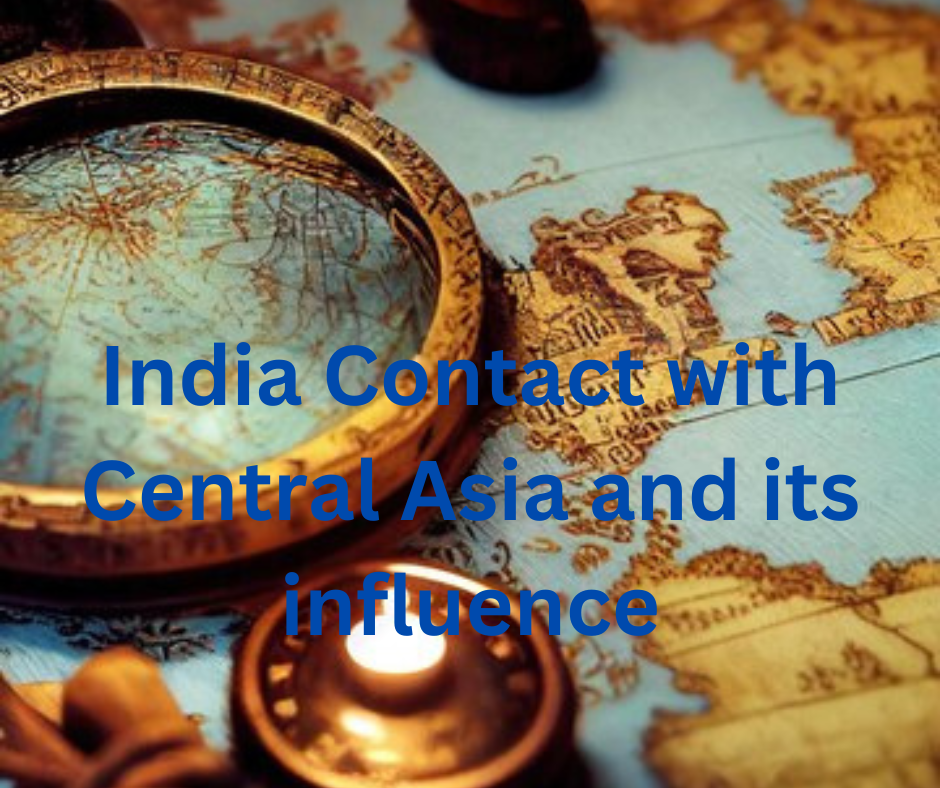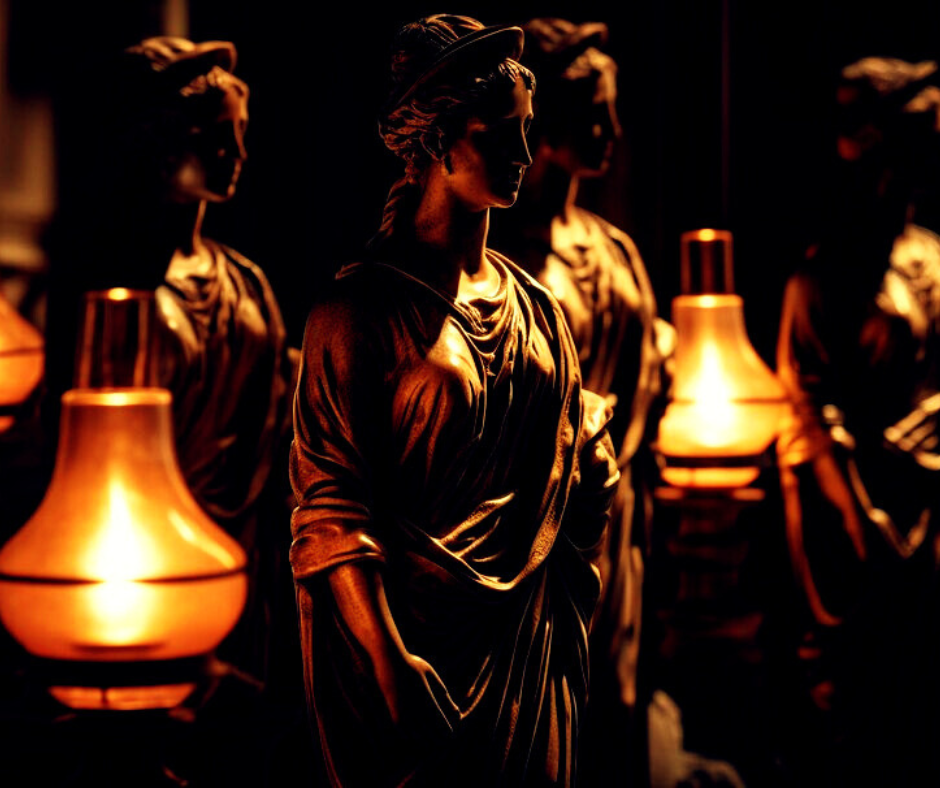Political aspect

During the period 200 BC, the Maurya Empire was as large as any other empire, during which a close relationship between Central Asia and India was established. In the eastern and central parts of India and in the Deccan, there came many local rulers like Ir Shunga of Pauri, Kanva and Satavahana. After the Mauryas, several Central Asian dynasties came and ruled north-western India. Among them, Kushan Savashtra became famous.
Indo-Greek

B.C. Around 200, a series of invasions began. The Greeks were the first to cross the Hindu Kush. Who ruled Bactria or Bahlika, located south of the Oxus River in the region of northern Afghanistan. The invaders came one after another, some of them ruling parallel at the same time. An important reason for the invasions was the weakness of the Seleucid Empire. This empire was established in an area called Parthia adjacent to Victoria and Iran. Due to great pressure from the Scythian tribes, successive Greek rulers were unable to maintain power in the region. With the construction of the Chinese Wall, the Scythians were pushed back from the Chinese border. So they turned their attention to the neighboring Greeks and Parthians. Pushed back by the Scythian tribes, the Bactrian Greeks were forced to invade India. During that period, Ashoka’s successors became so weak that they were not able to stop this wave of foreign invasions.
The Greeks were the first to attack India. Who were called Indo-Greeks, Indo-Vectarians. B.C. By the beginning of the 2nd century, the Indo-Greeks occupied large parts of northwestern India, which was under Alexander’s influence was also a very large area. It is said that he had reached as far as Ayodhya and Pataliputra. , However, the Greeks failed to establish a united rule in India. Two Greek dynasties ruled north-western India in parallel periods. The most famous Indo-Greek ruler was Menander (165–45 BC), also known as Milinda. His capital in Punjab was at Sakal (modern Sialkot), and he invaded the Ganga-Yamuna Doab. There were many metropolitan cities under him including Sakal and Mathura. He is known for the circulation of various types of coins during his rule. Nagasena, known as Nagarjuna; With the efforts of, he converted to Buddhism. Menander asked Nagasena many questions related to Buddhism. These questions and Nagasena’s answers were recorded in a book called Milindapaanho or Milind’s Questions.History of India due to the large number of coins issued by the Greeks. Indo-Greek rule is important. Indo-Greek rulers are the first rulers in India whose coins can be said to have been issued by which ruler. It is not possible to link old punch-marked coins to any dynasty in this way. The first rulers to issue gold coins in India were the Indo-Greeks, the number of these coins increased during the time of the Kushans. Greek rule in the north-western frontier of India introduced Hellenistic art, but it cannot be considered purely Greek. It was an art that developed as a result of Greek contact with non-Greek people, after the death of Alexander. Gandharan art was the best example of this.
Shakas. Rule(Shak)
After the Dunanis came the Shakas. The Sakas or Scythians destroyed the Greek powers in both Victoria and India and occupied a much larger part of India than the Greeks. The Shaka center of power had five branches in different parts of India and Afghanistan. The Shakas had a branch in Afghanistan; the second in Punjab whose capital was Taxila; and thirdly at Mathura, where he ruled for two centuries; The fourth branch occupied western India, where the Shakas ruled until the fourteenth century; The fifth branch established its power in the upper Deccan.
The Shakas did not face any resistance from the rulers and people of India. 1. Around 57-58 we hear of the king of Ujjain, who effectively fought against the Shakas and drove them out during his reign. he himself Vikramaditya said and after his victory over the Shakas, B.C. The era of 57 is considered Vikram Samvat in his name. Subsequently, Vikramaditya became a prestigious title. Whoever achieved success and displayed bravery assumed this title, just as Roman emperors used to adopt the title of Sozar for displaying great power. The result of this tradition was that there were fourteen Vikramadityas in Indian history. Chandragupta II of the Gupta dynasty was the most famous among them. This title remained in use for Indian kings till the twelfth century, it was especially popular in the western part of India and western Deccan. However the Shakas established their rule in different parts of the country. Among them, the Shakas, who ruled western India, continued to rule for about four centuries. They benefited greatly from the sea trade of Gujarat and issued many silver coins. The most famous Shaka ruler in India was Rudradaman I (AD 130-50). He ruled not only Sindh, but also a significant part of Gujarat, Konkan, Narmada Valley, Malwa and Kathiawar. He also got the Sudarshan Lake in the parched area of Kathiawar repaired, which was used for irrigation for a long time since the time of the Mauryas. Rudradaman was very interested in Sanskrit. Although their ancestors were from Central Asia, they issued the first long inscriptions in pure Sanskrit. All ancient inscriptions before this were in Prakrit, which Ashoka made the state language.
Parthian
The Shakas’ dominance in north-west India was followed by the Parthians; in several ancient Indian Sanskrit texts, both peoples are mentioned together as the Shakas-Pahlavas. In fact, both of them ruled India at the same time. Originally the Parthians or Pahlavas lived in Iran, from where they came to India. They occupied a small part of north-western India in the first century, which was much smaller than that of the Greeks and Shakas. The most famous king of the Parthivanas was Gondophares, during whose time Saint Thomas came to India to spread Christianity. Over time, the Parthians, like the Shakas, became an integral part of Indian politics and society.
Kushan
After the Parthians came the Kushans, they were called Yochi or Tocharians. Tocharians were considered similar to Sidhians. Yochi clan was divided into five sects, Kushan was one of them. These are nomadic people living in the plains of North-Central Asia in the neighborhood of China.
The Kushans first occupied Bactria or North Afghanistan and displaced the Shakas from there. Gradually they moved towards the Kabul valley and crossed the Hindu Kush and captured Gandhara and shattered the rule of the Greeks and Parthians in these areas. Ultimately they established their rule in the lower part of the Indus River and most parts of the Ganga Valley.
His empire extended from the Oxus to the Ganges, from Khorasan in Central Asia to Pataliputra in Bihar. They brought under their control a large part of the former Soviet republics of Central Asia, Iran, Afghanistan and almost the entire Pakistan and North India. For this reason, the Kushan Empire in India is sometimes called the Empire of Central Asia. This empire provided a unique opportunity for mutual contact and integration of different people and cultures. This process gave rise to a new type of culture, which spread across nine countries today.
There were two succeeding dynasties of Kushan. The first dynasty was founded by the head of the Kadfiz group and its rule lasted from 50 AD to twenty-eight years. During this period two kings ruled. The first king to issue coins south of the Hindu Kush was Kadphiz I, who minted copper coins in imitation of Roman coins. The second king, Kadphiz II, issued large numbers of gold coins and established his empire east of the Indus.
Indo-Sasanian
However, by the middle of the 3rd century, the Sasanians occupied the lower Indus region. In the beginning they called this area Hindu, this was not said in the context of religion, it was said in the sense of the people of Indus. The word Hindustan has been used in a Sasanian inscription of 262 AD. The word Hindustan, used for India in Mughal and modern times, was first used in the 3rd century. The Sasanians, also known as the Indo-Sasanians, ruled India for less than a century, but they contributed to the Indian economy by issuing large numbers of coins.
thanks please leave me comments and again thanks for reading my blog i hope my blog is helpfull all of you.
